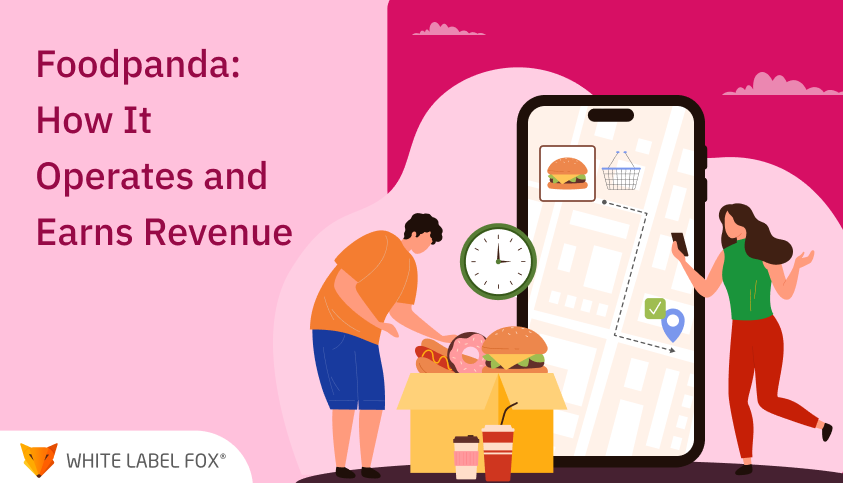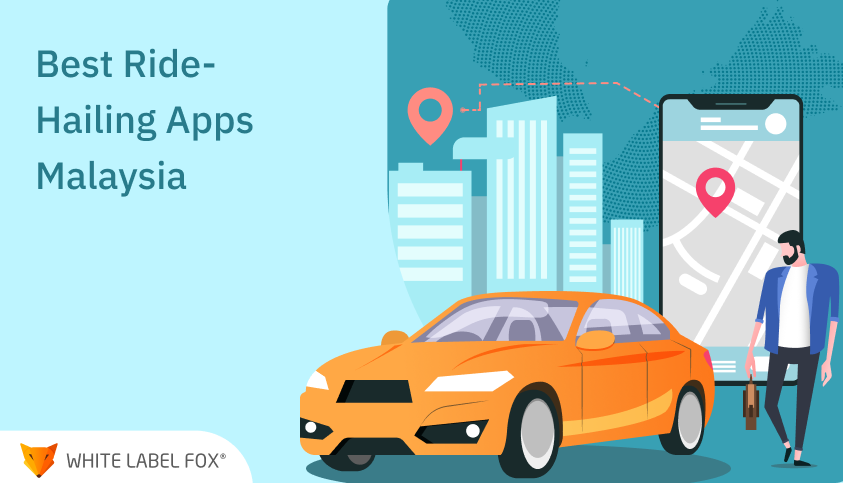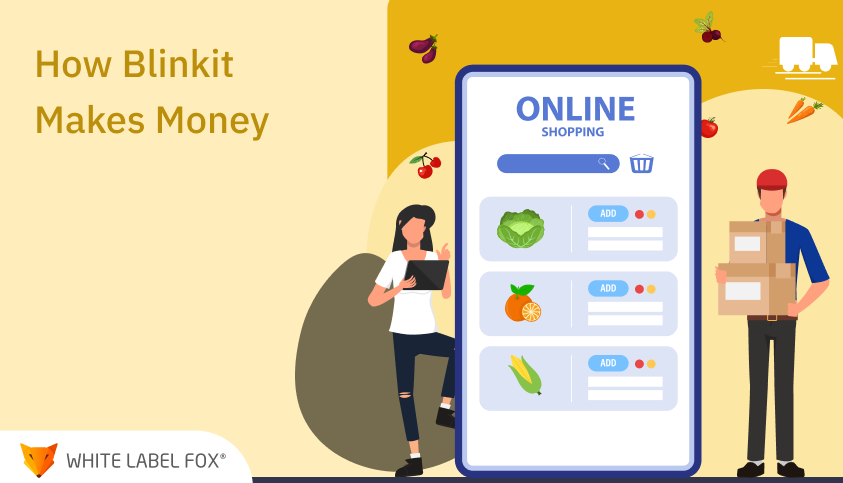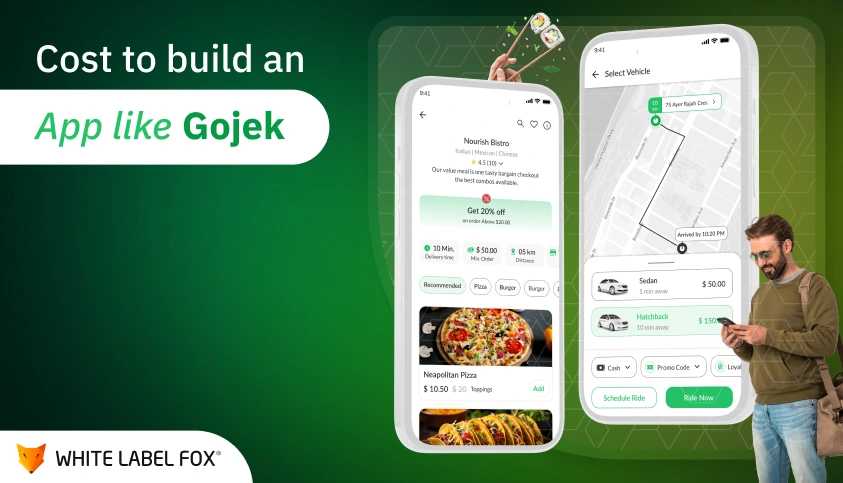Online food delivery platform, Foodpanda connects users to thousands of local meal ordering and delivery points. The hyperlocal delivery-based business model helps the delivery giant to cater to the growing demand in the market. Looking at the business giant’s success, many delivery brands are interested in a Foodpanda business model; they are trying to know how the delivery platform works and makes money.
The food delivery giant has covered a long journey. We are serving the communities in more than 400 cities and more than 12 markets in Asia, and the company hopes to play a positive part in customers’ lives.
Foodpanda is Asia’s largest delivery platform that helps 3000 new retailers and stores. The SMEs’ digitization made them experience 430% of growth. It is the most used platform for ordering meals from restaurants.
Users can explore multiple options before placing the order; they can even choose between pick-up or home delivery at their convenience. It takes only a few minutes for customers to place an order; Foodpanda offers customer ratings, menus, and other details for over 12 countries and over 115000+ restaurants.
What is Foodpanda?
Owned by Delivery Hero, Foodpanda is an on-demand food and grocery delivery platform. The company operates as a lead brand that is headquartered in Singapore and works for Delivery Hero in Asia.
Are You Planning To Develop A Food Delivery App Like Foodpanda?
Learn More About Our Readymade Delivery Script.
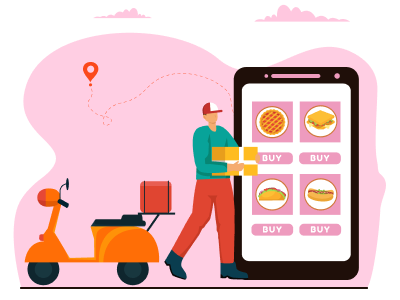
Recently Foodpanda invited panda pro members to a get-together event; guests had a great chance to build magical connections, go around the venue, and bond over their mutual love for meals while dining in style.
History and Successtime of Foodpanda to Look into!
Foodpanda is a leading food delivery operator that has completed millions of orders till today and raised more than 8.7 million. The meal delivery sector in the Philippines has been dominated by two companies, Foodpanda and Grab. These companies will cover around 52% and 48% of the market share, respectively, in 2021. Meal delivery is a growing sector worldwide, mainly since the pandemic spread.
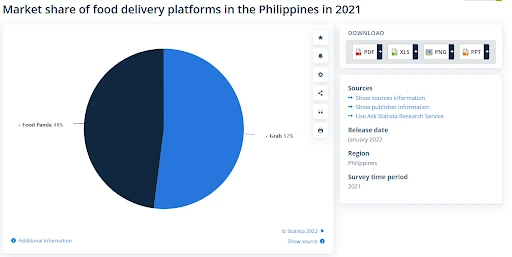
Online food ordering and delivery platforms serve in many areas like Bangladesh, Hong Kong, Cambodia, Hungary, Germany, Japan, Laos, and many more. Foodpanda processes and delivers orders directly to local restaurants, the delivery agent then delivers the food to the customers’ location. Customers can book the meal through a website and mobile app on iOS and android platforms. Have a look at the success timeline before exploring the Foodpanda business model right here.
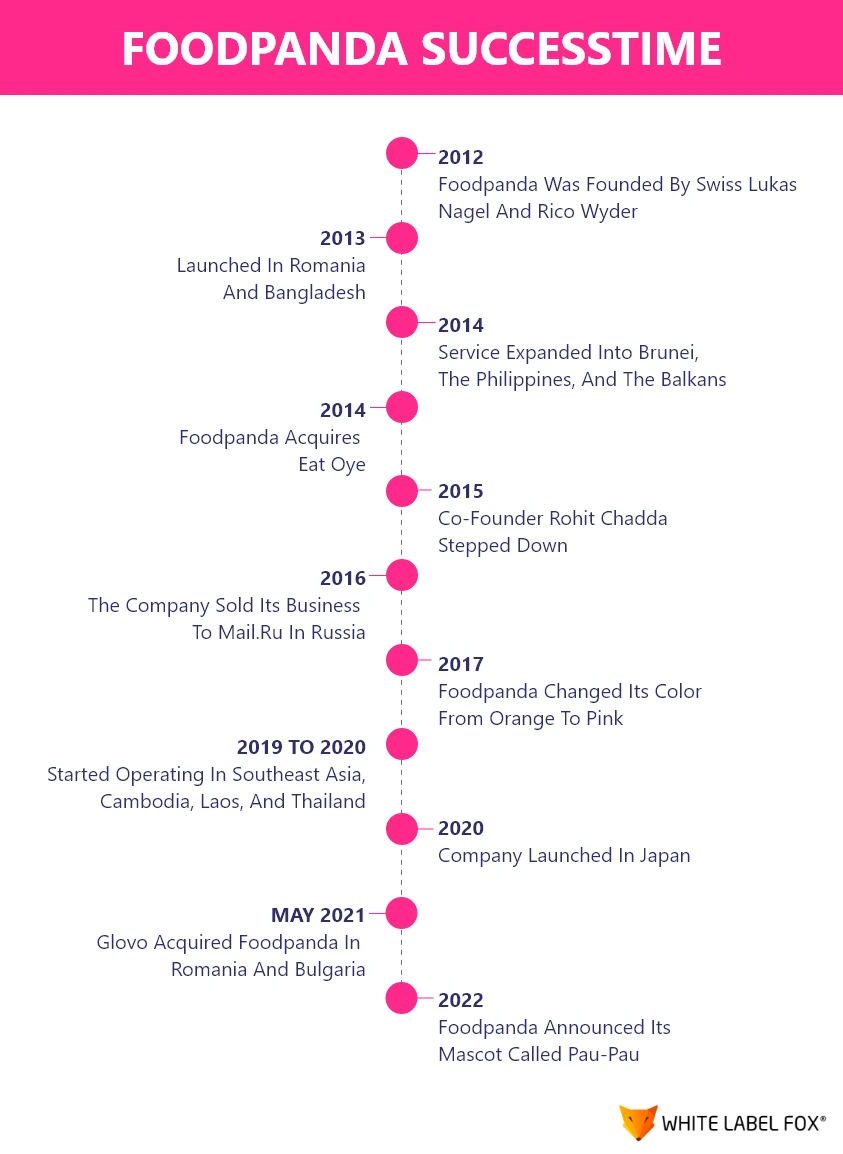
Foodpanda enables customers to browse the menu, select items, enter a delivery location, and make payments online/offline. They can even use the review section on restaurant sites to leave comments on delivery, taste, and sales and rate the local store based on an overall impression of the restaurant.
Foodpanda gobbled up $20 million in initial funding from Phenomen Ventures, Rocket Internet, and Investment AB Kinnevik in April 2013. Later, iMENA Holdings invested around $8 million in September 2013. There was another funding round of $20 million in February 2014 from a group of investors and Phenomen Ventures.
In August 2014, Foodpanda announced that it collected $60 million in financing from a group of investors. The food delivery giant raised another $110 million from Rocket Internet and other investors in March 2015. Two months later, Goldman Sachs, along with other investors, invested about $100 million.
Delivery Hero acquired Foodpanda in December 2016. You might have a clear idea about Foodpanda funding, investment, acquisition, and success time. Now let’s explore how Foodpanda works, and it’s business and revenue model right here.
Foodpanda Business Model: How Does Delivery Giant Satisfy Growing Demand?
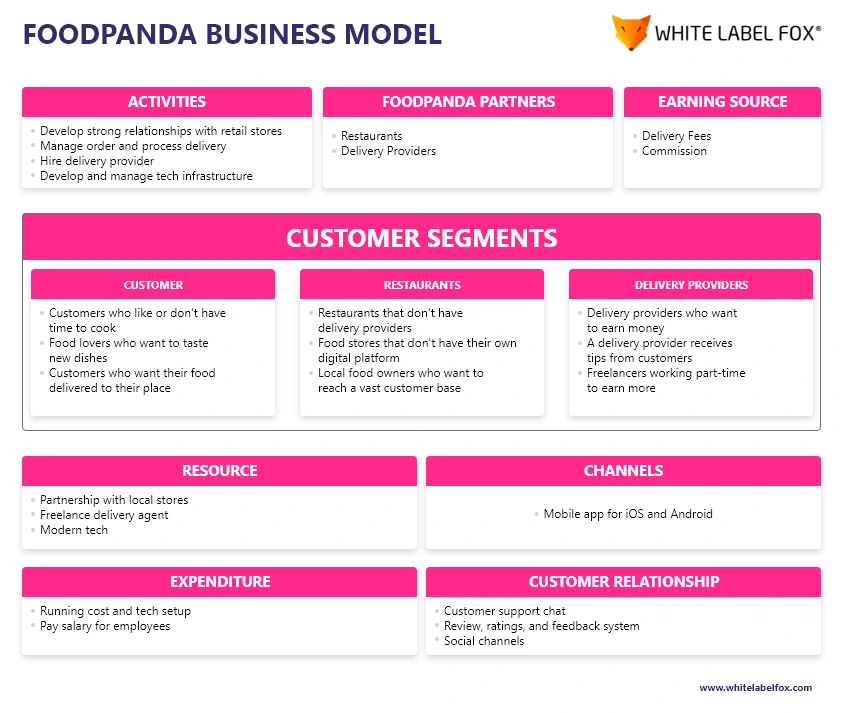
Foodpanda workflow is based on the hyperlocal business model, which provides numerous benefits to the company. The top benefits of the Foodpanda business model are as follows:
- Helps to meet the growing demand for hyperlocal online meal delivery services
- User Engagement
- Improved business control
- Supporting local restaurants
Foodpanda maintains a website and app that food lovers can use to order food from their favorite restaurants and eateries. In 2018, Foodpanda started providing special deals, offers, and discounts to increase platform traffic. The company has clocked around 30,000 to 35,000 orders per day before the approach. This number is expected to reach 5,000 daily orders in the future.
The delivery company continues in-house brands known as “cloud kitchens.” This concept was adopted by the delivery giant when it acquired Holachef. However, the company has three private-label brands in 2019 under its cloud kitchen business, including the FLRT and Great Khichdi experiment.
Customer Segments
Multi-sided Foodpanda business model has two interdependent customer segments possessing its essential; this segment includes:
- Restaurant;
- Customers;
- Delivery agents.
Value PropositionThe platform provides value propositions including cost reduction, brand status, accessibilities, convenience, and customization. Foodpanda develops accessibilities by permitting meal stores to promote their business to customers who want to visit a physical location and search for tribulation by searching the website online.
It allows customers to place orders from an online food ordering app or website, providing great convenience. They can get round-the-clock service from the delivery providers without any hassle. Customers can choose to pick up or get meals delivered right to their doorsteps.
The platform allows customers to filter restaurants as per their type. It also provides lots of engaging deals to customers, such as meal discounts, free deliveries, and more. Amazing offers boost customer engagement and encourage them to try something new and save their cost.
Cost Structure
Foodpanda has built a strong brand with its effective business model. The delivery giant serves more than 500 cities in around 24 countries. An online ordering and meal delivery platform won the European Tech Startup Award in 2014 for “Best E-commerce Startup.”
The amazing cost-driven structure aims to minimize expense, boost significant automation, and surge store sales. However, the biggest cost drivers for the food delivery platform are advertising costs, employees’ salaries, etc. Few other drivers are like administration, customer support, etc.
How Does Foodpanda Work?
Effective Foodpanda business model provides great convenience to all the users. Customers can follow the easy registration and login process to use the platform. They can browse the nearby restaurant and their menu to place an order from them. Once they finalize the order, they can move to the check-out process and pay using multiple payment options like credit/debit cards or other payment options.
Once the customer places the order, the restaurant gets notified about the same. Then, the Foodpanda partner restaurant confirms the order and prepares the meal. As soon as the order is prepared, the restaurant requests a delivery provider to deliver the meal to the customer’s place.
The delivery agent then collects the order and delivers it to the customer’s place. The customer is allowed to track the process right from the moment the restaurant accepts their request through the delivery website and app. They can review and rate the restaurant and delivery provider as per their experience.
Many food ordering and delivery business entrepreneurs are getting inspired by a Foodpanda business model and the way it works to satisfy customers’ growing requirements and investing in an app similar to Foodpanda. If you are also looking for a meal ordering and delivery app development service, White Label Fox can help you with it. Contact our experts to get a free quote right away.
Foodpanda Revenue Model: How it Makes Money?
Most revenue of Foodpanda comes from restaurant commissions with which the delivery giant has partnered. Besides, it also generates revenue from other sources helping the company to generate great profits. The food ordering and delivery market generated around US$7.4 billion in 2021; this profit increased by 40% year-on-year.
Foodpanda segment revenue increased by 60% due to the COVID-19 pandemic; the revenue increased by US$616.2 million in the same quarter a year ago. Foodpanda has seen a great increase in revenue in recent years. The company generates revenue through various means like commission, advertisement, etc.
Restaurant Registration Fees
Restaurants have to pay registration fees to register themselves with the Foodpanda website and app. Customers looking to satisfy their cravings can find eateries on the Foodpanda platform. The registration charges are between $100 to $150. It is a one-time payment for restaurants helping them to generate great profits.
Commission
Restaurants have to pay a commission to Foodpanda for each order they get through the platform. They have to pay between 15 to 25% to Foodpanda with all taxes. The commission is determined based on the restaurant’s location and also on the volume and kind of orders the restaurant receives on the platform.
Delivery Fees
Every order customers place through the Foodpanda platform is subject to delivery fees. This delivery charge depends on the distance that needs to travel between customers and the restaurant’s location.
Advertisement
Many business entrepreneurs use Foodpanda as an advertising platform as it helps them boost their visibility. Businesses have to pay a steady fee to advertise their brand on this food ordering and delivery platform.
Affiliate Earnings
The delivery giant makes money by making recommendations on different credit cards. It stimulates transactions; banks provide special deals and discounts on their cards. You can also use affiliate marketing to earn money like Foodpanda.
A food delivery app like Foodpanda has competed with many delivery giants and made its name in today’s competitive market. If you want to grab similar success, then you need to choose the right tech partner. Capitalizing on the dynamic method can help you provide your customers with what they are looking for.
Ending Note
Foodpanda has faced lots of ups and downs and has survived due to its effective business model. If you want to achieve similar success, then following the Foodpanda business model is the best option. We hope this blog might help you to know how Foodpanda works and makes money.
If you want to capture a vast base, then developing a delivery anything app is a smart choice to make. White Label Fox can help you give an online touch to your delivery business, get in touch to know how we help give a digital touch to your business and contact us at: [email protected].
Frequently Ask Questions
Foodpanda is an online food delivery service that connects customers
with
restaurants, enabling them to order food via the Foodpanda app or
website.
Customers can browse a variety of local and international restaurants,
place
their orders, and have food delivered to their doorstep. Foodpanda then
processes the order, charges the customer, and arranges for delivery
either
through its own network or a third-party delivery driver.
Foodpanda boasts several features that enhance both the customer and
restaurant experience:
- Wide Restaurant Selection: Foodpanda features a broad
range
of restaurants from fast food to high-end dining, allowing users
to
explore multiple cuisines.
- Real-Time Tracking: Customers can track their food
delivery
in real time, ensuring they know exactly when to expect their
order.
- Multiple Payment Options: Customers can pay for their
orders
using credit/debit cards, mobile wallets, or cash on delivery.
- Discounts and Promotions: Foodpanda offers various
promotions, discounts, and loyalty programs for customers, such
as
limited-time offers and first-time user discounts.
- Customer Feedback: Users can rate their food and delivery
experience, which helps maintain service quality and provides
insights for future improvements.
- Wide Restaurant Selection: Foodpanda features a broad range of restaurants from fast food to high-end dining, allowing users to explore multiple cuisines.
- Real-Time Tracking: Customers can track their food delivery in real time, ensuring they know exactly when to expect their order.
- Multiple Payment Options: Customers can pay for their orders using credit/debit cards, mobile wallets, or cash on delivery.
- Discounts and Promotions: Foodpanda offers various promotions, discounts, and loyalty programs for customers, such as limited-time offers and first-time user discounts.
- Customer Feedback: Users can rate their food and delivery experience, which helps maintain service quality and provides insights for future improvements.
Restaurants can benefit from partnering with Foodpanda by expanding
their
reach and increasing sales:
- Wider Customer Reach: Foodpanda offers restaurants a
platform
to reach more customers, especially those who prefer ordering
food
online.
- Operational Efficiency: Restaurants can leverage
Foodpanda’s
delivery system, reducing the need for their own delivery
infrastructure.
- Marketing and Promotions: Restaurants can gain visibility
by
promoting their menus on Foodpanda’s app, potentially increasing
orders.
- Data Insights: Foodpanda provides restaurants with
valuable
customer insights, helping them optimize their menu offerings
and
pricing.
- Wider Customer Reach: Foodpanda offers restaurants a platform to reach more customers, especially those who prefer ordering food online.
- Operational Efficiency: Restaurants can leverage Foodpanda’s delivery system, reducing the need for their own delivery infrastructure.
- Marketing and Promotions: Restaurants can gain visibility by promoting their menus on Foodpanda’s app, potentially increasing orders.
- Data Insights: Foodpanda provides restaurants with valuable customer insights, helping them optimize their menu offerings and pricing.
Foodpanda serves several customer segments:
- End Consumers: Individuals looking for quick, convenient
food
delivery services from a variety of local and international
restaurants.
- Restaurants: Foodpanda partners with both small local
eateries and large national chains to increase their customer
base.
- Delivery Partners: Independent delivery drivers who work
with
Foodpanda to deliver food to customers.
- Advertisers and Partners: Brands and businesses that use
Foodpanda's platform for advertising their products and services
to
a wide audience.
- End Consumers: Individuals looking for quick, convenient food delivery services from a variety of local and international restaurants.
- Restaurants: Foodpanda partners with both small local eateries and large national chains to increase their customer base.
- Delivery Partners: Independent delivery drivers who work with Foodpanda to deliver food to customers.
- Advertisers and Partners: Brands and businesses that use Foodpanda's platform for advertising their products and services to a wide audience.
Foodpanda uses a combination of strategies to maintain the quality of
service:
- Customer Reviews: Customers rate restaurants and delivery
services, helping Foodpanda monitor performance and make
adjustments
when needed.
- Restaurant Audits: Foodpanda conducts audits of
restaurants
to ensure that they meet hygiene and service standards.
- Real-Time Order Tracking: Customers can track their
orders in
real time, which helps minimize delays and ensures transparency
in
the delivery process.
- Customer Support: Foodpanda offers responsive customer
service to handle any issues or complaints that customers may
have
during the ordering and delivery process.
- Customer Reviews: Customers rate restaurants and delivery services, helping Foodpanda monitor performance and make adjustments when needed.
- Restaurant Audits: Foodpanda conducts audits of restaurants to ensure that they meet hygiene and service standards.
- Real-Time Order Tracking: Customers can track their orders in real time, which helps minimize delays and ensures transparency in the delivery process.
- Customer Support: Foodpanda offers responsive customer service to handle any issues or complaints that customers may have during the ordering and delivery process.
For customers, the typical costs associated with using Foodpanda
include:
- Food Costs: The price of the food ordered from the
restaurant.
- Delivery Fee: A variable delivery charge depending on the
distance and location of the delivery.
- Service Fee: A small percentage charge that may be added
to
the order total.
- Tips: While optional, customers can choose to tip the
delivery driver for exceptional service.
- Subscription Fees: If customers opt for a premium service
like "Foodpanda Plus," they will incur a monthly or yearly
subscription fee.
- Food Costs: The price of the food ordered from the restaurant.
- Delivery Fee: A variable delivery charge depending on the distance and location of the delivery.
- Service Fee: A small percentage charge that may be added to the order total.
- Tips: While optional, customers can choose to tip the delivery driver for exceptional service.
- Subscription Fees: If customers opt for a premium service like "Foodpanda Plus," they will incur a monthly or yearly subscription fee.
Customers benefit from Foodpanda in several ways:
- Convenience: Customers can browse through various
restaurants
and order food at their convenience, with home delivery.
- Variety: Foodpanda offers a wide range of cuisines from
different types of restaurants, allowing customers to explore
new
dining options.
- Exclusive Deals: Foodpanda offers discounts, loyalty
programs, and promotions to make food ordering more affordable
for
customers.
- Ease of Use: The user-friendly app and website allow
customers to quickly place orders, track deliveries, and make
payments.
- Flexible Payment Options: Customers can pay using
multiple
payment methods, including credit cards, mobile wallets, and
cash on
delivery.
Foodpanda stands out in several ways:
- Global Reach: Foodpanda operates in over 40
countries,
giving
it a wide geographical presence and access to diverse
markets.
- Wide Range of Partners: Foodpanda partners with
various
restaurant types, including local favorites and
international
chains, providing customers with more options.
- Customer Loyalty Programs: Foodpanda offers
various
loyalty
programs like "Foodpanda Plus," which provides exclusive
perks
for
regular customers.
- Delivery Flexibility: Foodpanda offers both
in-house and
third-party delivery options, providing flexibility and
ensuring
a
broad reach for customers.
- Seamless Technology: Foodpanda has a robust app
and
website
that integrates AI and data analytics to improve
customer
experiences and streamline operations.
Despite its success, Foodpanda faces challenges such as:
- Intense Competition: Foodpanda faces competition
from
other
major food delivery platforms like Uber Eats, Zomato,
and
Deliveroo,
which can impact market share.
- Delivery Costs: Delivery operations are costly,
and
rising
fuel and labor costs can impact the overall
profitability of
Foodpanda.
- Restaurant Margins: Restaurants may be reluctant
to pay
high
commission fees, which could limit the number of quality
restaurants
willing to partner with Foodpanda.
- Customer Retention: With fierce competition,
retaining
customers requires continuous innovation and offering
better
deals
to stay ahead in the market.
- Convenience: Customers can browse through various restaurants and order food at their convenience, with home delivery.
- Variety: Foodpanda offers a wide range of cuisines from different types of restaurants, allowing customers to explore new dining options.
- Exclusive Deals: Foodpanda offers discounts, loyalty programs, and promotions to make food ordering more affordable for customers.
- Ease of Use: The user-friendly app and website allow customers to quickly place orders, track deliveries, and make payments.
- Flexible Payment Options: Customers can pay using multiple payment methods, including credit cards, mobile wallets, and cash on delivery.
Foodpanda stands out in several ways:
- Global Reach: Foodpanda operates in over 40
countries,
giving
it a wide geographical presence and access to diverse
markets.
- Wide Range of Partners: Foodpanda partners with
various
restaurant types, including local favorites and
international
chains, providing customers with more options.
- Customer Loyalty Programs: Foodpanda offers
various
loyalty
programs like "Foodpanda Plus," which provides exclusive
perks
for
regular customers.
- Delivery Flexibility: Foodpanda offers both
in-house and
third-party delivery options, providing flexibility and
ensuring
a
broad reach for customers.
- Seamless Technology: Foodpanda has a robust app
and
website
that integrates AI and data analytics to improve
customer
experiences and streamline operations.
- Global Reach: Foodpanda operates in over 40 countries, giving it a wide geographical presence and access to diverse markets.
- Wide Range of Partners: Foodpanda partners with various restaurant types, including local favorites and international chains, providing customers with more options.
- Customer Loyalty Programs: Foodpanda offers various loyalty programs like "Foodpanda Plus," which provides exclusive perks for regular customers.
- Delivery Flexibility: Foodpanda offers both in-house and third-party delivery options, providing flexibility and ensuring a broad reach for customers.
- Seamless Technology: Foodpanda has a robust app and website that integrates AI and data analytics to improve customer experiences and streamline operations.
Despite its success, Foodpanda faces challenges such as:
- Intense Competition: Foodpanda faces competition
from
other
major food delivery platforms like Uber Eats, Zomato,
and
Deliveroo,
which can impact market share.
- Delivery Costs: Delivery operations are costly,
and
rising
fuel and labor costs can impact the overall
profitability of
Foodpanda.
- Restaurant Margins: Restaurants may be reluctant
to pay
high
commission fees, which could limit the number of quality
restaurants
willing to partner with Foodpanda.
- Customer Retention: With fierce competition,
retaining
customers requires continuous innovation and offering
better
deals
to stay ahead in the market.
- Intense Competition: Foodpanda faces competition from other major food delivery platforms like Uber Eats, Zomato, and Deliveroo, which can impact market share.
- Delivery Costs: Delivery operations are costly, and rising fuel and labor costs can impact the overall profitability of Foodpanda.
- Restaurant Margins: Restaurants may be reluctant to pay high commission fees, which could limit the number of quality restaurants willing to partner with Foodpanda.
- Customer Retention: With fierce competition, retaining customers requires continuous innovation and offering better deals to stay ahead in the market.

